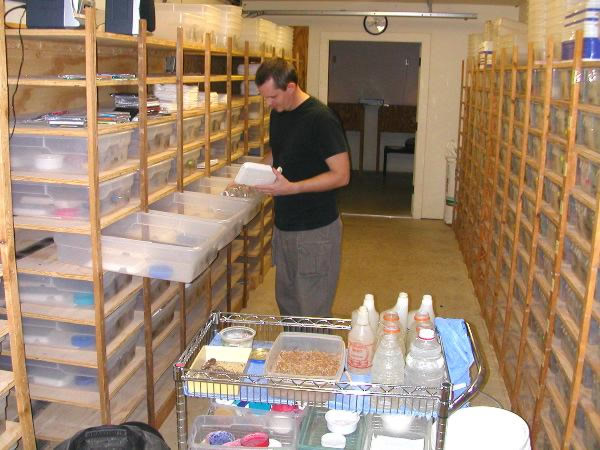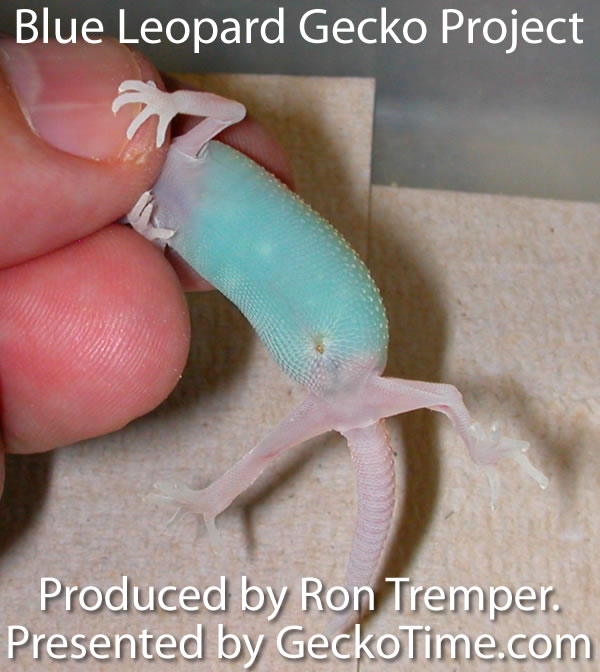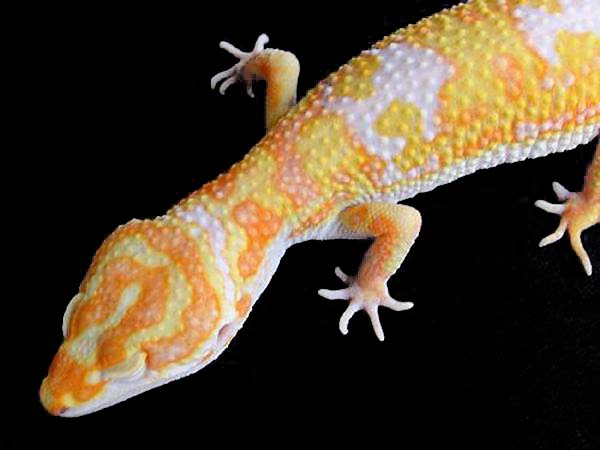[ad#250]
Can you give us some background information on yourself, Ron?
I started the reptile hobby when I was 6 years old collecting turtles and tortoises and later served as Curator of Reptiles at the Fresno Zoo in California. I started the Center for Reptile & Amphibian Propagation in 1981 and have pioneered such species as Argentine Horned frogs, Veiled and Panther chameleons and Leopard geckos. Our state-of-the- art 9400 sq. ft. facility was built in 1993 just north of San Antonio, Texas. We have bred leopard geckos for 31 generations as of 2009, and have come up with many new morphs over the years with more to come.

How has the economic climate affected your sales?
The reptile industry has not escaped our depressed economy. Despite a big drop in retail leopard gecko sales, our wholesale business in the States has been good, as well as our overseas efforts. You have to be able to flex during such times.
What species of geckos do you keep and breed?
Although I brought in most of the first Rhacodactylus species from breeders in Europe in the mid 80’s, we have focused mainly on leopard geckos and in recent years added crested geckos to the center.
How have leopard geckos changed over the span of time you’ve worked with them?
From 1975 to 1995 there were very few morphs around, but as breeders began to unlock a host of hidden genetics, the industry has exploded with many new and exciting morphs and color projects in the last 10 years. Now the interest has gone global in the last 3 years further fueling sales, interesting projects, and a bright future for the trade.
Do you think the bloodlines in the US need out-crossing to wild caught animals? Why or why not?
Yes, it is important to inject wild bloodlines into these morphs from time to time so that vigor and immunity to disease is kept high. One can often achieve the same positive results by out-crossing with other breeders’ various morphs.
How many geckos do you have breeding in the 2009 season?

Currently we have over 2000 breeding leopard geckos and expect to produce around 10,000 of all morphs we work with.
With so many geckos, you have to have learned some time saving tips. Could you share any of those with us?
Whether you have 8 boxes or 800, you will find that a good rack system and record cards on each box will help keep you organized. We have built our own racks (see photo), but when a purchase is needed we prefer the Vision units. Try to do the same care work on a given day of the week and stay on task. Much of the success for long-term projects can be achieved by determination, good record keeping, good husbandry and plain old hard work.
You have significant experience producing and marketing new morphs and strains. How would you recommend someone going about this, given the opportunity?
To make a new morph you have to have a large group of multi-het breeding stock. Otherwise the chances are slim to have a new mutation occur at random. A breeder must be able to think “outside the box” literally and have the patience, time and space to devote to projects that take years and create many hundreds of geckos that are byproducts of such a project. If you have a good work ethic and a passion it is possible for someone to make new wonders. For example, the Abyssinian is the kind of multi-genetic gecko that produces and unlocks new things when paired with unrelated morphs.
What projects do you have in the making?
We have several exciting new leopard gecko projects going on……..
- It looks like a brand new albino strain has surfaced and is in my hands. Final testing is being conducted now. Results will be made known this summer.
- Working on the elusive all black leopard gecko.
- Found the genes for beautiful turquoise blue on the body in 2008. Working hard to perfect this genetic mutation and hope to have something to show the world in 2010.
The possibilities are still endless!

Thanks, Ron!!
Gecko Time would like to thank Ron Tremper for his time and exciting interview! Be sure to stop by Ron’s website, LeopardGecko.com. Ron is also on twitter, follow him @herpetologist.



Excellent interview. Looking forward to some blue Leos. I always liked the blue “eyeshadow” on my Leo. All-blue would be spectacular.
the blue leo will rule the leopard gecko world!!! =)
I’m not too impressed with just the blue belly. Now if the entire body turns out solid that color, that’d be awesome.
I wonder what the new albino strain looks like, and I wonder how he managed to get his hands on it, as he put it.
I think it would be cool if there was a black AND turquoise leopard gecko!
You all are wierd why do you put these poor leopard geckos through all of this? Why not leave them as they were intended to be when they were discovered!
I have a lepord spotted gecko, named Armando! He’s 9 years. He’s very smart! Though his color isn’t soo exiting
yo love the geckos
I agree with LizzardBoy all this genetic manipulation is unnecessary. And really affects the life span of the gecko. Moose the (Tremper) Giant (maybe super) only lived 7 yrs normal lifespan for a male leopard gecko is upwards to 20 yrs. STOP PLAYING MAD SCIENTIST PEOPLE and leave them be.. Thank you. 🙂
Why are we weird ? it’s only colours ! The body of the leopard gecko doesn’t change, infact the gecko doesn’t even know the difference. It’s like a whit person having a mixed race baby, is tht cruel ? No. Before u start a debate, make sure You know what ur talking about because u make a fool of urself !
if the lifespan of a certain gecko is decreased then I totally understand u, at least u actually give a reason for a debate Lool. I agree with that, if the geckos are being affected then yes, that certain project should be stopped, but of the gecko isnt experiencing such things then I don’t see what’s wrong with a few more pretty colours thrown in. I myself am breeding my geckos next season, I have a female albino bell, a male wild type revers stripe, and we have just purchased a beautiful baby sunglow raptor who I’m sure is a female so she won’t be able to breed untill the season after as she will be far too young to lay eggs. I am very much looking forward to starting my own project, my albino bell and reverse stripe wild type have been laying eggs for 3 years but I couldn’t incubate them. I am in a different position now and can incubate them. But the Heath of my geckos always come first. that is the most important thing when involved in a breeding project, I feel. As long as u put them first then there’s nothing wrong with trying to add new colours and morphs x
HI GUYS I AM 13 LIVING IN GEORGE SOUTH AFRICA MY NAME IS JADEN AND I LOVE GECKOS I LOVE INBREADING ITS COOL AND I WILL LIKE IT IF YOU GUYS WILL COURIER ME SOME GECKOS LIKE LEOPARD GECOS AND OTHER EXOTIC GECOS MALE AND FEMALE I RESEARCH GECKOS 24/7 SORRY FOR MY SPELLING I AM AFRIKAANS I WILL ADOPT YOU GECKOS IF YOU DONT WANT THEM OR HAVE TO MANY SO PLS GUYS LOOK AFTER YOUR GECKOS AND I AM STARTING A FUND RASER TO BUY GECKOS WHATSAPP OR CALL ME :0791207386
Good luck getting some geckos. You will need to go to a pet store in S. Africa. You will not get them this way.